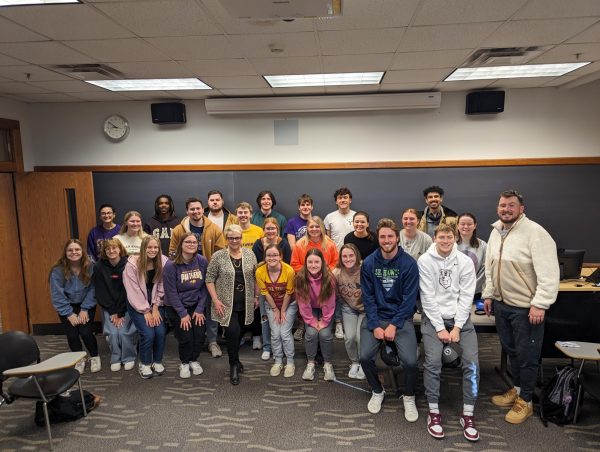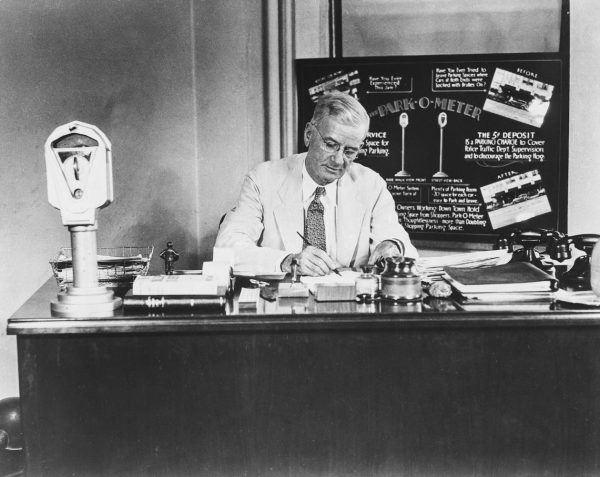College of Education returns home
Schindler Education Center is on track to reopen in the spring after beginning construction in fall 2015.
Dec 1, 2016
Education majors and professors across campus will be returning to the now completely renovated Schindler building in the 2017 spring semester. Over winter break, contractors will help move classes into the building. Because of the renovation, students and faculty alike will find the building better lit, easier to navigate and filled with updated technology and learning spaces.
Schindler, which is over 40 years old, had needed the renovations badly, according to Mike Zwanziger, director of the Physical Plant.
“The building was built in the early seventies, and a lot of things were dated,” Zwanziger said. “The types of instructional spaces were dated. The technologies of the building [were] dated. There were movable walls that you could get several hundred people in an auditorium, but it’s not the way we’re teaching anymore. Mechanical and electrical furnishings in the building were in very poor condition.”
Schindler houses one of the largest teacher education programs in the country, which left a lot of professors and students displaced and in need of a temporary home during the renovation period, which began in the 2015 fall semester.
“I will admit I was pretty disappointed when I found out the renovation would be taking place during the time I happened to be taking a majority of my major courses,” said Samantha Klein, senior elementary and middle level education double major. “It has been hectic and frustrating being displaced all throughout campus, but I understand. Schindler was in need of a renovation, and I am just glad I get to wrap up my final semester in the building!”
Rick Knivsland, field experience coordinator for the Teaching Department in the College of Education, agrees that it has been hard displacing so many people but believes, in the end, it was a good experience.
“All the departments on campus everywhere have opened their doors to us and have been kind to us,” Knivsland said. “We have met a lot of people so it has been a good thing for socialization so we’re not as stuck in our department as a lot of people seem to be. We’re very happy to be together again all under the same roof.”
Not only are staff and students excited to be back under one roof, some are also looking forward to the changes the renovation will be bringing to the building.
“I’m excited for the new building,” said Sarah Gorzney, a junior English major. “The old one was so confusing, I could never find anything. I don’t know if I’ll be using all the new features, however.”
“Our goal has been very student oriented,” Knivsland said. “One of our major goals has been to make it easier to find where it is that you need to go. Way finding has always been an issue with the building. You’d have to take people where they need to go because you can’t really explain it well.”
“There were a lot of movable walls that had a lot of sound transmission coming through,” Zwanziger said. “We moved the corridors to the middle of the building and increased natural lighting. We maximized the natural lighting that comes through the windows we do have in order to light the instructional spaces better […] One of the things we’ve done was cut a hole in the commons area and added a clear story to the place so that there is more natural light in the space so it’s brighter.”
So what can students expect out of the renovation?
“Better classrooms closer to how we teach was another major goal. We had these classrooms no one liked learning in or teaching in,” Zwanziger said. “Now we have better sized class rooms with better acoustics and better lighting […] The whole building is going to be up to the standard the campus is going to want to be up to.”
Despite Schindler’s extensive renovations, the building’s new features will not impact students’ tuition costs.
“For these renovations, it doesn’t impact student tuition. The funding for Schindler and what would be done for the library would be all state appropriations,” Zwanziger said. “Lawther Hall is through the Department of Residence, which is an enterprise. It would be funded through room and board rates.”
In addition to state funding, donations have contributed greatly to the changes being made.
“I’m excited that we’ve had so many generous donors,” Knivsland said. “I think possibly over $7 million for the project were from the generous people of Iowa. Because of that, we were able to do a lot of things we wouldn’t have been able to do with the money the legislature, or the Regents, gave us.”
Zwanziger’s hope is that the money put into the project has the positive change the university had hoped for.
“I think it has the potential to really provide some great spaces for people to learn, new technology, new teaching methods,” Zwanziger said. “I think it’s a real exciting space and I hope it’s as successful as we planned it.”
















